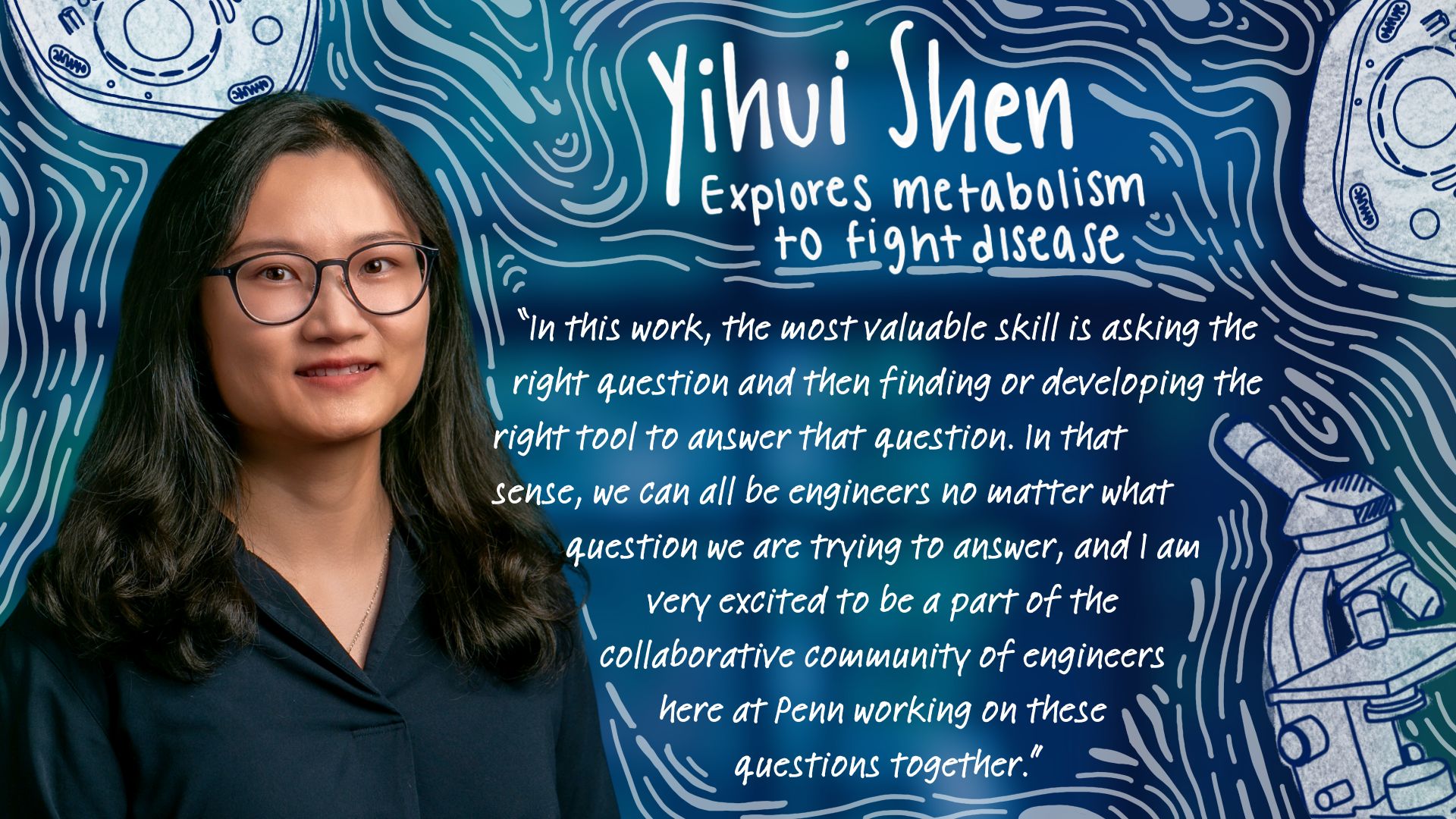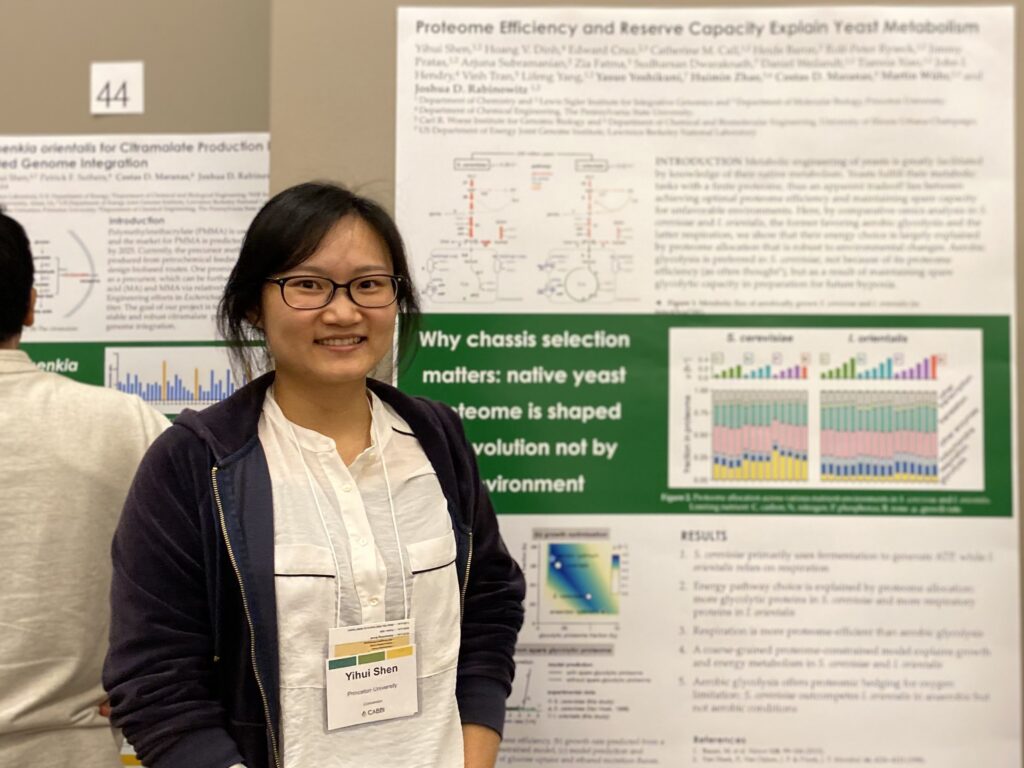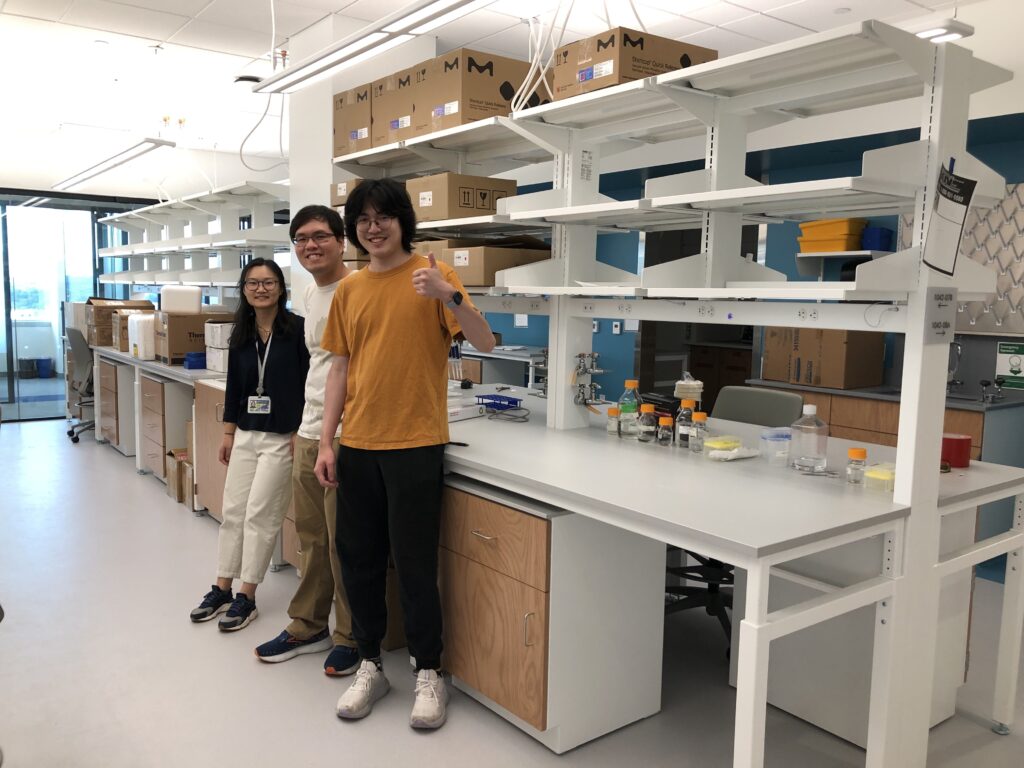 Enamored by the chemical processes of life, Yihui Shen, J. Peter and Geri Skirkanich Assistant Professor of Innovation in Bioengineering, started her research career as a chemist studying the way that proteins fold and the intricate dynamics underlying life processes.
Enamored by the chemical processes of life, Yihui Shen, J. Peter and Geri Skirkanich Assistant Professor of Innovation in Bioengineering, started her research career as a chemist studying the way that proteins fold and the intricate dynamics underlying life processes.
“As an undergraduate, I studied physical chemistry, thinking that one day I’d be addressing challenges in hardcore STEM fields,” she says. “It wasn’t until I observed the dynamics of a single protein molecule that I fell in love with microscopy. I realized that this imaging tool could not only help us observe biological processes on a small scale, but it could also provide new insight at the interface of engineering, chemistry and physics and solve problems on a large scale.”
When Shen turned her attention to microscopy, the field itself was advancing quickly, with improvements being made and new techniques being released every month. Without missing a beat, Shen dove deeper into the most current tools available when she joined Dr. Wei Min’s lab at Columbia University as a doctoral student.
“Professor Wei Min is a pioneer in a new imaging technique called coherent Raman imaging,” says Shen. “In this type of microscopy, we focus light on a very specific point in the cell and measure the amount of scattered light that comes back after exchanging energy with the molecular vibration. This approach allows us to visualize the spatial distribution of different molecules, the very chemistry of life I had studied as an undergraduate, at a high enough resolution to gain insights into biological processes, such as tissue organization, drug distribution and cellular metabolism.”
With this new tool under her belt, Shen was able to ask the kinds of questions that could connect the use of this observation tool to practical applications for real-world challenges.
“I started thinking outside the box,” says Shen. “What if we could observe the chemical exchanges involved in metabolism as they are happening on the scale of a single cell, and then use that insight to pinpoint the exact metabolic pathways and molecules that facilitate tumor growth and disease?”

Shen came to Penn Engineering with the determination and resources to answer those questions. In her newly established lab, Shen aims to advance the molecular precision of coherent Raman imaging to allow researchers to understand the minutia of metabolism and open doors to new cancer treatments and therapies.
“Metabolism is the process that converts what we eat into energy that supports our activity,” she says. “While we might commonly think of it as being the process responsible for our ability to lose weight, it does so much more. It may be the most important chemical process in the body, responsible for energy production and conversion, the synthesis of proteins, lipids, nucleic acids and carbohydrates, the removal of waste and toxins from the body and maintaining a stable cellular environment.”
However, traditional techniques to study metabolism have required the use of radioactive tracers. For example, the clinically applied positron emission tomography (PET) scan measures the radioactivity originating from tissue uptake, accumulation and metabolism of radioisotope modified metabolites.
“PET is a very powerful imaging test to reveal biochemical and metabolic functions in tissues and help diagnose disease or monitor treatments,” says Shen. “But the spatial resolution and molecular precision of these techniques are far from what is needed to understand the metabolic processes in many physiological and diseased contexts. We would not be able to tell if the metabolic activity arises from one cell or another cell that is 10 microns away, nor could we decipher which pathway nutrients are flowing through.”
To get to the resolution needed to observe metabolic activity in individual cells, Shen turns to coherent Raman imaging, which allows for the observation of these processes with stable isotope tracers. Shen also applies mass spectrometry to quantify the flow of materials through different metabolic pathways, a technique called metabolic flux analysis.
“I’m really excited to apply measurements and insight from coherent Raman imaging and metabolic flux analysis to future cancer treatments,” she says. “A tumor builds a highly heterogeneous environment. This environment is a mixture of cancer cells and immune cells as well as some stromal cells, and it’s a battleground where immune cells are fighting cancer cells.”
“The big questions for my lab to address are which cells are doing what, what are the metabolic differences between tumor and immune cells, and what pathways and molecules are responsible for those metabolic differences,” she continues. “The goal is to find what controls the metabolic differences and then leverage that by manipulating the metabolism or changing the metabolic environment to be able to aid therapy.”

As Shen dives into these questions, she is building up her lab at Penn Engineering, which occupies newly renovated space in One uCity. She welcomes students and collaborators who are passionate about microscopy, imaging and systems biology and who are interested in applying those tools to advance our understanding and treatment of diseases.
“In this work, the most valuable skill is asking the right question and then finding or developing the right tool to answer that question,” says Shen. “In that sense, we can all be engineers no matter what question we are trying to answer, and I am very excited to be a part of the collaborative community of engineers here at Penn working on these questions together.”
